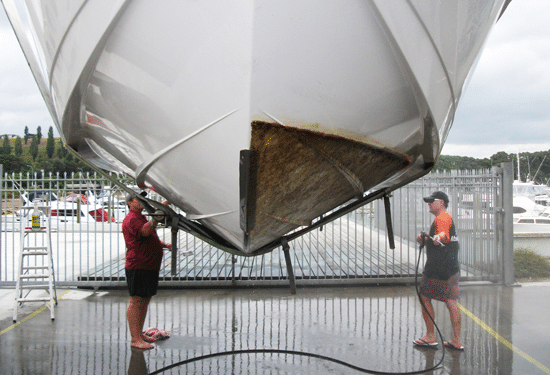DIY Tips On How To Remove Hull Oxidisation Stains From Your Boat
t’s fun to have a boat that you can use for sailing, fishing or just for the thrill of speed. But owning a boat also means a lot of hard work to keep your vessel in good condition and looking immaculate. A dirty looking boat full of hull oxidisation stains is an eyesore.
If your boat is always clean and spotless, you can use it with pride. Sometimes your vessel will get yellow stains where the water meets your hull. These stains are normally caused by minerals or lime scale left by water on your boat. Lime scale residue sticks to your boat’s hull like glue and can be difficult to get rid of.
Hull oxidisation will happen whether you use your boat in open sea, in a lake or pond. They are very visible in the hull where the water touches your boat. You can clean off the lime scale stains yourself but it will be a difficult task that will take several hours of work under the sun.
Some things you will need are common household tools and cleaning solutions. These are a garden house or pressure washer, a pair of rubber gloves to protect your hands from solvents and dirt, a soft bristle brush or large sponge, a spray bottle, toilet bowl cleaner, boat wax and some clean rags and towels.
Douse your hull with fresh water (not sea water) with a garden hose or pressure washer. A pressure washer can actually get a lot of dirt out even before you start soaping or scrubbing the hull. When your hull is thoroughly wet, mix a solution of toilet bowl cleaner and a little water in your spray bottle.
Spray your hull with the cleaning solution and let it sit on the surface for five minutes. Scrub the soapy surface with a sponge or brush. Do not use a brush with tough bristles or rub the surface with steel wool to prevent scratching your fiberglass hull.
Fiberglass hulls are coated with a gel-like surface layer that will scratch if rubbed with something rough. Once fibreglass is damaged it will be costly to repair or replace. Leaving the scratches on will make your vessel look just as bad as a boat with hull oxidisation stains.
After scrubbing off all the stains and dirt, rinse your hull with water again using your hose or pressure washer. Make sure that you rinse off all the cleaning solution from the surface. You can air dry your boat or dry it with some clean towels. Air drying sometimes leaves water spots which boat wax can’t remove completely.
As soon as your boat dries, apply the boat wax with a clean rag in circular motions. Wait for the wax to turn hazy and white before wiping off the wax. After wiping out the wax and haze, polish your hull with a clean soft rag. Your hull will look shiny and new again. The remaining wax should be transparent, will add sheen and protect your boat from future hull oxidisation and stains.
If the task seems too much for you, you should consider getting a professional boat valeting service to clean your hull. The pros have the right tools, experience and equipment to get your boat looking spic and span in no time.
DISCLAIMER: this advice is given “as is” and in good faith. However we take no responsibility for the accuracy of this advice nor for any damage caused by following this advice. We recommend that you contact a suitably qualified tradesman to carry out this work.
